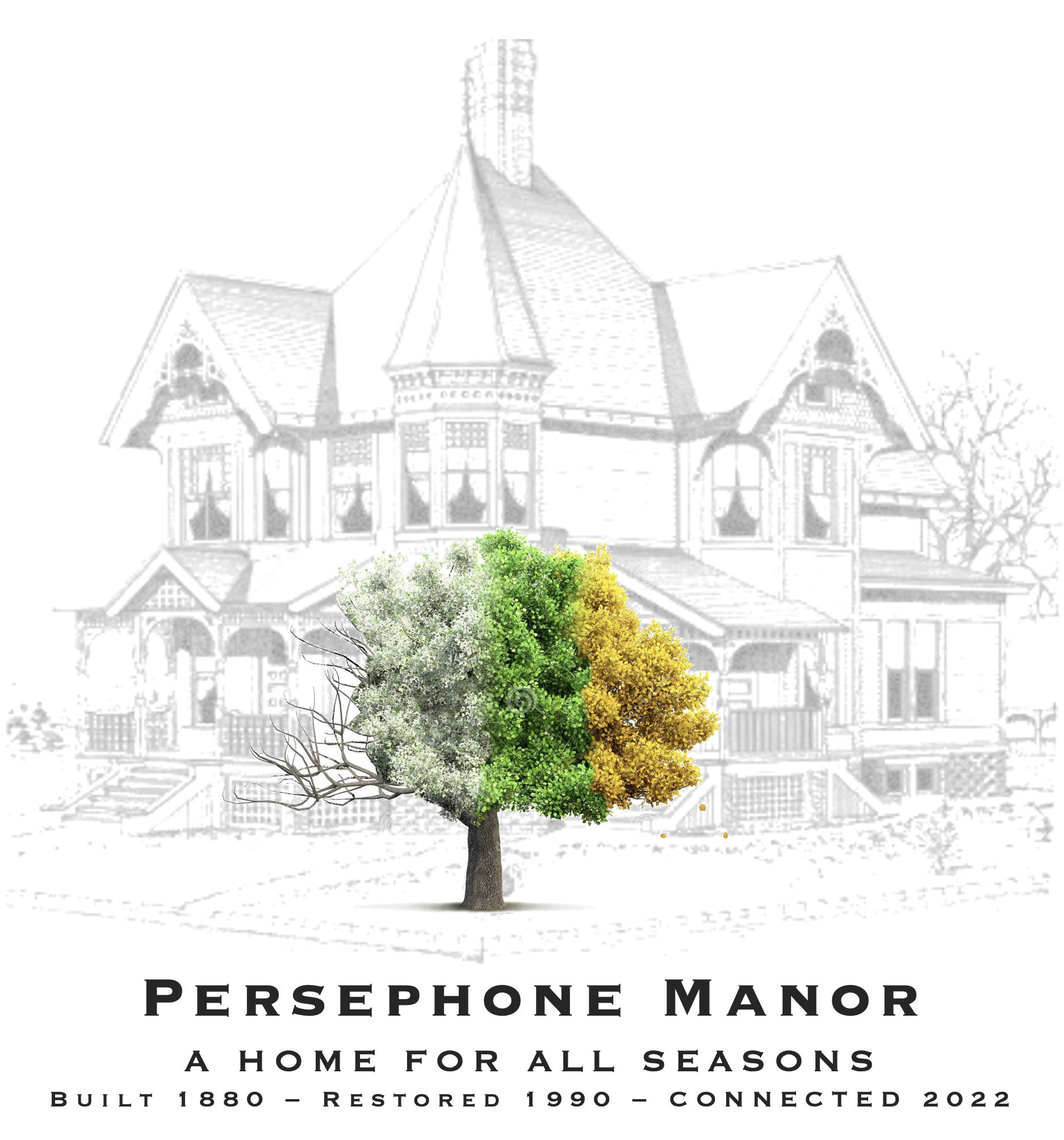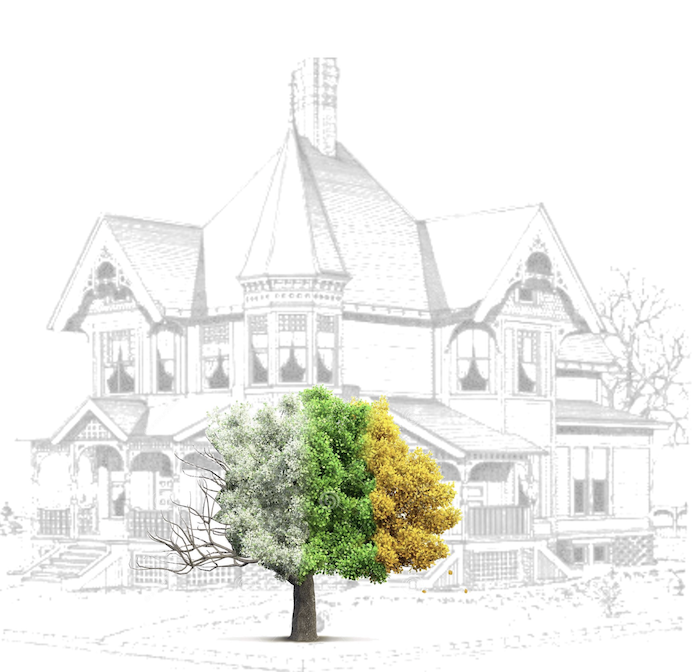
Exploring the History of Persephone Manor:
A Victorian Gem in Fonda, NY
Fonda, NY in the Late 1800s
A Snapshot of Historical Charm
Fonda, NY, nestled in Montgomery County, was a bustling community in the late 1800s. Characterized by its scenic landscapes and emerging industries, the area was a hub of economic and social activities. The town, named after the Fonda family, an influential group in the early development of the region, played a pivotal role in the growth of central New York during this period.
Community and Culture
The late 19th century in Fonda was a time of growth and transformation. The expansion of the Erie Canal and the railroad brought economic prosperity, facilitating trade and attracting settlers. The town's community life was vibrant, with local businesses, schools, and churches thriving amidst the backdrop of Victorian America.
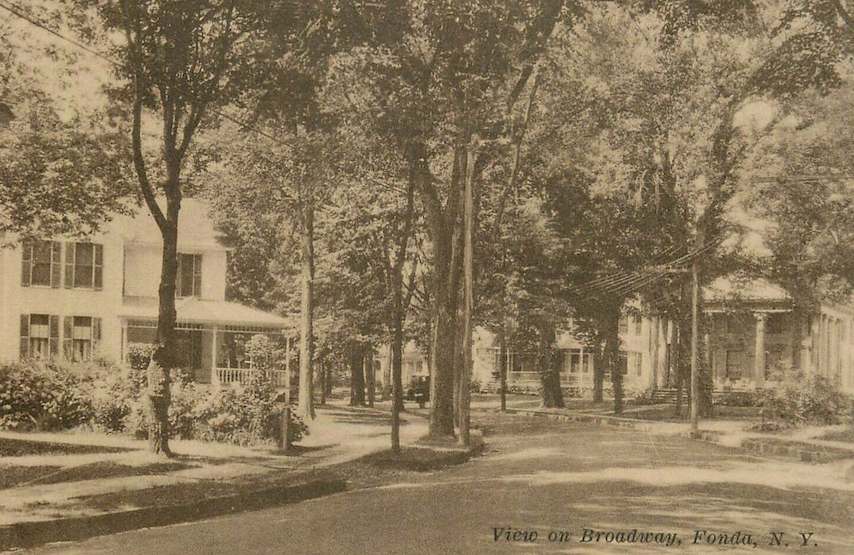
The Architectural Marvel
Construction in 1893
38 Broadway, Fonda, New York was built in 1893, during a time when architectural creativity and craftsmanship were at their peak. The house reflects the quintessential elements of Victorian architecture - from intricate woodwork and elaborate stained glass windows to the distinctive asymmetrical design.
Architect George Franklin Barber
The architect behind this masterpiece was George Franklin Barber, a renowned figure in American architecture. Barber was known for his innovative designs and mail-order architecture plans, which allowed clients across the country to build fashionable and personalized homes.
Barber's Vision
Barber's architectural style was characterized by its attention to detail, decorative elements, and a blend of various architectural influences. His designs often featured spacious porches, towers, and ornate woodwork, all of which are evident in Persephone Manor.
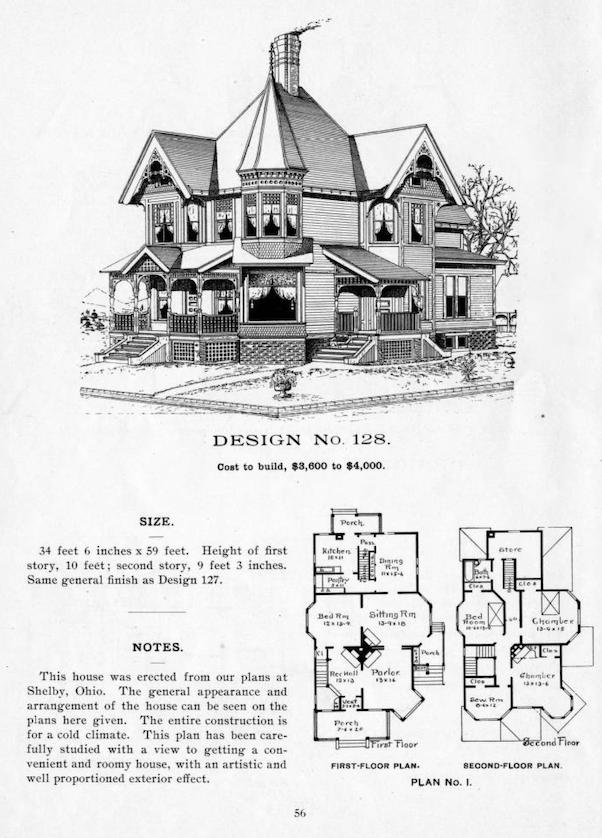
The Spraker Era (1900s to the 1968)
38 Broadway, a Victorian architectural gem in Fonda, NY, has a storied history marked by a succession of owners who each contributed to its legacy. The early 1900s through the early 1970s were particularly notable for the changes in ownership and the impact each owner had on the house.
The Spraker Era (1918-1957)
Marion E. Spraker: A Pivotal Figure
- Initial Ownership (1918-1968): Marion E. Spraker, a prominent figure in Fonda's history, acquired the property in April 1918. Her tenure was characterized by careful maintenance and preservation of the home’s original features.
- Family Ties and Transfers: The property saw brief ownership changes within the family, including a temporary transfer to Katherine Spraker Bacon in 1923, but it ultimately returned to Marion's hands.
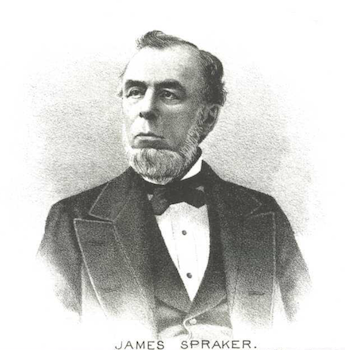
The Preservation of Legacy (1957-1971)
- Joint Tenancy Establishment (1957): In a strategic move to preserve the property within the family, Marion and Florence Spraker Prescott established joint tenancy, ensuring a smooth transition of the estate.
- Final Bequest: Upon Marion’s passing in 1968, the property was bequeathed to her grandson, William S. Prescott, reflecting the family’s desire to keep the home within their lineage.
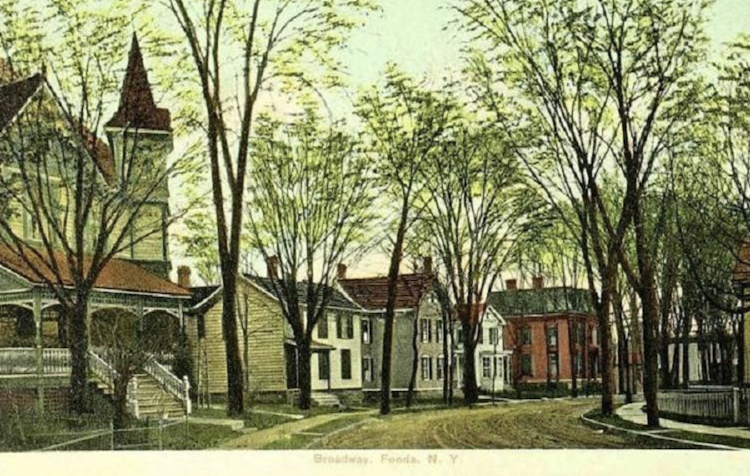
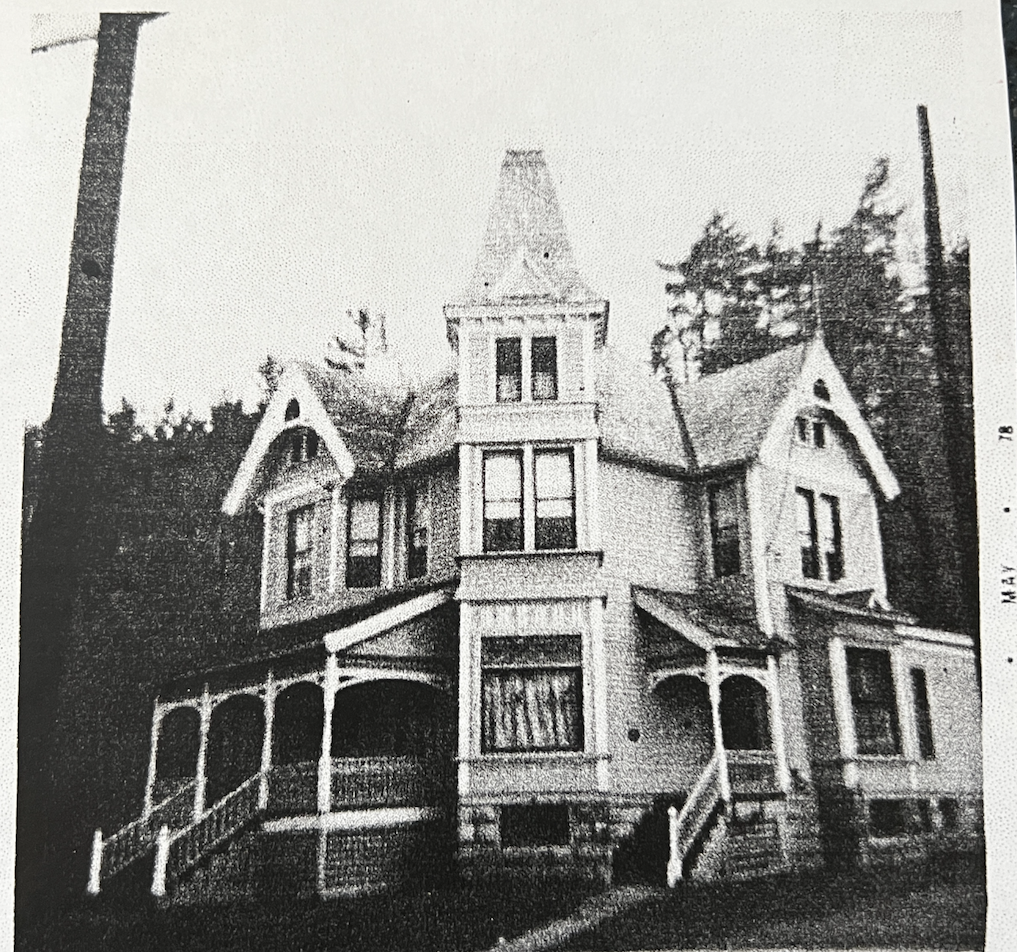
Life After The Sprakers (1971-1998)
The Sale to the Weinman Family (Early 1970s)
End of an Era: The sale of the property to Sidney and Lynette Weinman marked the end of the Spraker family's direct involvement with Persephone Manor. This transition symbolized a shift from a family heirloom to a historic property under new stewardship.
The Weinman Stewardship (1971-1976)
Sidney and Lynette Weinman: After purchasing the property from William S. Prescott in 1971, the Weinmans held the house for five years. Their period of ownership symbolized a transition from a family heirloom to a property passing through different hands, setting a precedent for the subsequent ownership changes.
A Series of Transitions (1976-1982)
Bryan D. and Kathleen K. Cullen (1976-1977): The Cullens' brief tenure was a continuation of the property's evolving narrative. They maintained the home’s integrity before passing it on to the next owners.
Eugene and Nancy Dayton (1977-1979): The Daytons took over the stewardship of Persephone Manor, contributing to its ongoing story.
Joseph and Deborah J. Howard (1979-1982): The Howard family continued the legacy, maintaining the property for a few years before transferring it to new hands.
The Era of Restoration and Change (1980s)
Michael P. and Diane J. Weller (1982-1984): During their ownership, the Wellers possibly faced challenges, as indicated by the subsequent legal and financial complications that emerged.
Alfred E. Geraghty (Referee, 1984): Geraghty’s brief role as a referee in the deed likely pointed to a period of legal or financial turbulence concerning the property.
Joan K. Ashmon and James Klemic (1984-1989): Ashmon and Klemic's ownership marked a period of stability and likely continued care for the property.
The Carpenter Era (1990s)
Wayne R. Carpenter (1989-1998): Carpenter’s nine-year ownership saw the house being used for various purposes, including renting and housing antiques. His tenure added another layer to the home's rich history.
The Tom Pagano Era - Restoration and Challenges (1998-2008)
Continuing our exploration of Persephone Manor's history, we delve into Tom Pagano's tenure, a period defined by ambitious restoration, but ultimately overshadowed by financial challenges.
Tom Pagano: A Visionary Restorer
- Reviving Persephone Manor: Tom Pagano's journey with the house began with a passion for its architectural charm and potential. His work started in earnest, focusing on restoring the property to its former glory while modernizing it for contemporary living.
- Comprehensive Overhaul: The restoration process included a new roof, exterior and interior painting, the addition of porches, and various structural repairs. Pagano's vision extended to the kitchen, stairwell, dining room, and more, integrating modern comforts while preserving historical integrity.
The Challenges of Restoration
- Dealing with Deterioration: Pagano faced significant challenges, including a deteriorating roof and structural issues. His dedication to the project saw him addressing these problems head-on, ensuring the house's survival.
- Blending Old and New: Pagano's approach to restoration was unique – he aimed to marry the historic essence of the house with modern amenities, such as updated landscaping, a driveway, and a garage.
Financial Struggles and Loss
- Tax Warrant: Despite Pagano's efforts, financial difficulties began to surface. In 2004, a tax warrant was issued against him for unpaid taxes amounting to $9,107.15, as per court records (Case# 2004-15731).
- Mortgage Challenges: Additionally, Pagano took out a mortgage of $70,000.00 in 2004, as recorded in Liber 1158 of Mortgages; Page 111, to presumably aid in financing the ongoing restoration and maintenance of the property.
- Second Tax Warrant: Further compounding his financial woes, another tax warrant was issued on July 21, 2004 (Case# 2004-16049), for an additional $1,209.61.
- Foreclosure and Loss: The culmination of these financial struggles led to the foreclosure of the property. On August 27, 2008, Persephone Manor was foreclosed for back taxes, marking the end of Pagano's ownership and his ambitious restoration project.
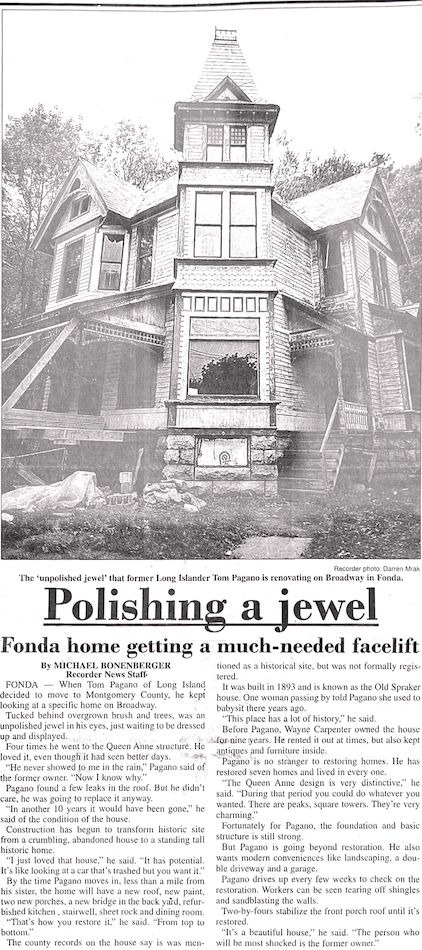
The Era of Rebirth and Resilience Peter & Loralee (2010 - 2022)
Following the turbulent period of Tom Pagano's ownership, Persephone Manor entered a new chapter under the stewardship of Peter G. Psaras and Loralee Haughn. This era, spanning from February 26, 2010, to May 3, 2022, was marked by continued restoration, adaptation for unique purposes, and resilience against natural challenges.
Peter G. Psaras & Loralee Haughn: Custodians of Heritage
- Acquisition and Vision: Peter G. Psaras and Loralee Haughn purchased Persephone Manor on February 26, 2010. Their tenure was characterized by a deep respect for the property's history and a vision to adapt it to modern uses while preserving its essence.
- Transforming Space into a Book Haven: Recognizing the potential of the spacious rooms, Peter, an avid book lover, turned part of the Manor into a book store. The living room, with its high ceilings and Victorian charm, was reinforced to accommodate tens of thousands of books, creating a unique fusion of a historical home and a literary sanctuary.
Structural Enhancements and Personal Touches
- Reinforcing History: The reinforcement of the living room floor was a significant undertaking, ensuring the structure could support the weight of the extensive book collection.
- Adding Modern Conveniences: In their tenure, they added a garage to the property, blending the new structure seamlessly with the Manor's historical aesthetics.
- Pet-Friendly Innovations: Reflecting their love for pets, Peter and Loralee added a special feature for their dogs – a dedicated window with a ramp, allowing their furry companions easy access to the outdoors.
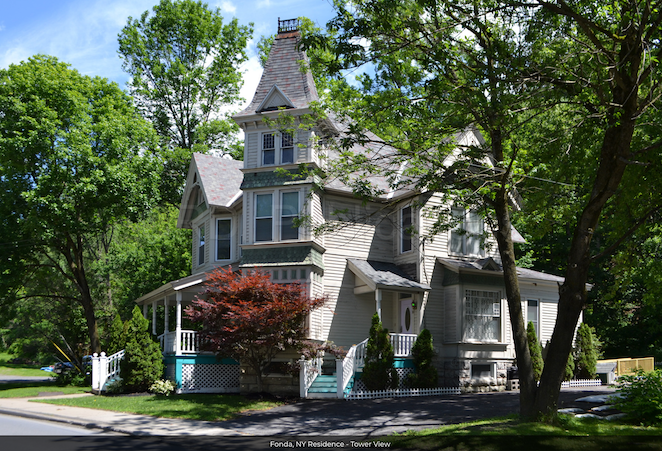
FINDING HOME
February 2022
We worked with our realtor to discover the house in the Winter of 2022. Here is 38 Broadway as we found her.
Today at Persephone Manor: Technological Harmony
(May 2022 - Present)
In May 2022, Persephone Manor embarked on an unprecedented chapter, blending its historic charm with cutting-edge technology. Purchased by Chris Dancy and Fernando Albarran, the Manor not only got a new name but also a transformative vision, marrying its rich past with a futuristic approach to living.
Chris Dancy and Fernando Albarran: Visionaries of a "Wise Home"
- Acquisition and Renaming: Chris Dancy, known as the "world's most connected person," and Fernando Albarran took stewardship of the Manor in May 2022. They christened it "Persephone Manor," a name that echoes its regal and mysterious allure.
- A Vision of a Wise Home: Moving beyond the concept of a smart home, they aimed to create a "wise home." This vision was not just about integrating technology into a living space but doing so in a way that resonates with the natural rhythms and cycles of life.
Integrating Technology with Seasons and Senses
- Seasonal Synchronization: Each room in Persephone Manor was uniquely designed to represent one of the four seasons. The entire house transitions through the year, using smart technology to mimic the light patterns, sounds, and scents of each season.
- Sensory Integration: Over 150 Hue smart bulbs, 30 hidden ambient Sonos speakers, and 20 different wifi Pura diffusers were installed. These elements work in unison to create a living environment that changes with the seasons, providing a sensory experience that is both unique and harmonious with nature.
Advanced Control and Automation
- Smart Environmental Control: The Manor employs Dyson smart fans, Nest thermostats, and multiple sensors to regulate motion, humidity, and temperature. These elements are finely tuned to ensure optimal comfort while being environmentally conscious.
- Syncing with Natural Cycles: The technology is not just limited to seasonal changes. The house also adapts to the lunar phases and special days throughout the year, creating an ambiance that is constantly in tune with the natural world.
Persephone Manor: A Beacon of Historical Preservation and Technological Innovation
- Preserving History: While infusing the house with modern technology, Chris and Fernando have been careful to preserve its historical integrity. The architectural beauty and the vintage charm of the Manor remain untouched, blending seamlessly with the technological enhancements.
- Documenting and Sharing the Journey: Chris and Fernando have taken to documenting the history and ongoing transformation of Persephone Manor, sharing its story and their journey with a wider audience. This has not only added to the house's lore but also inspired others in the possibilities of harmonizing history with modern living.
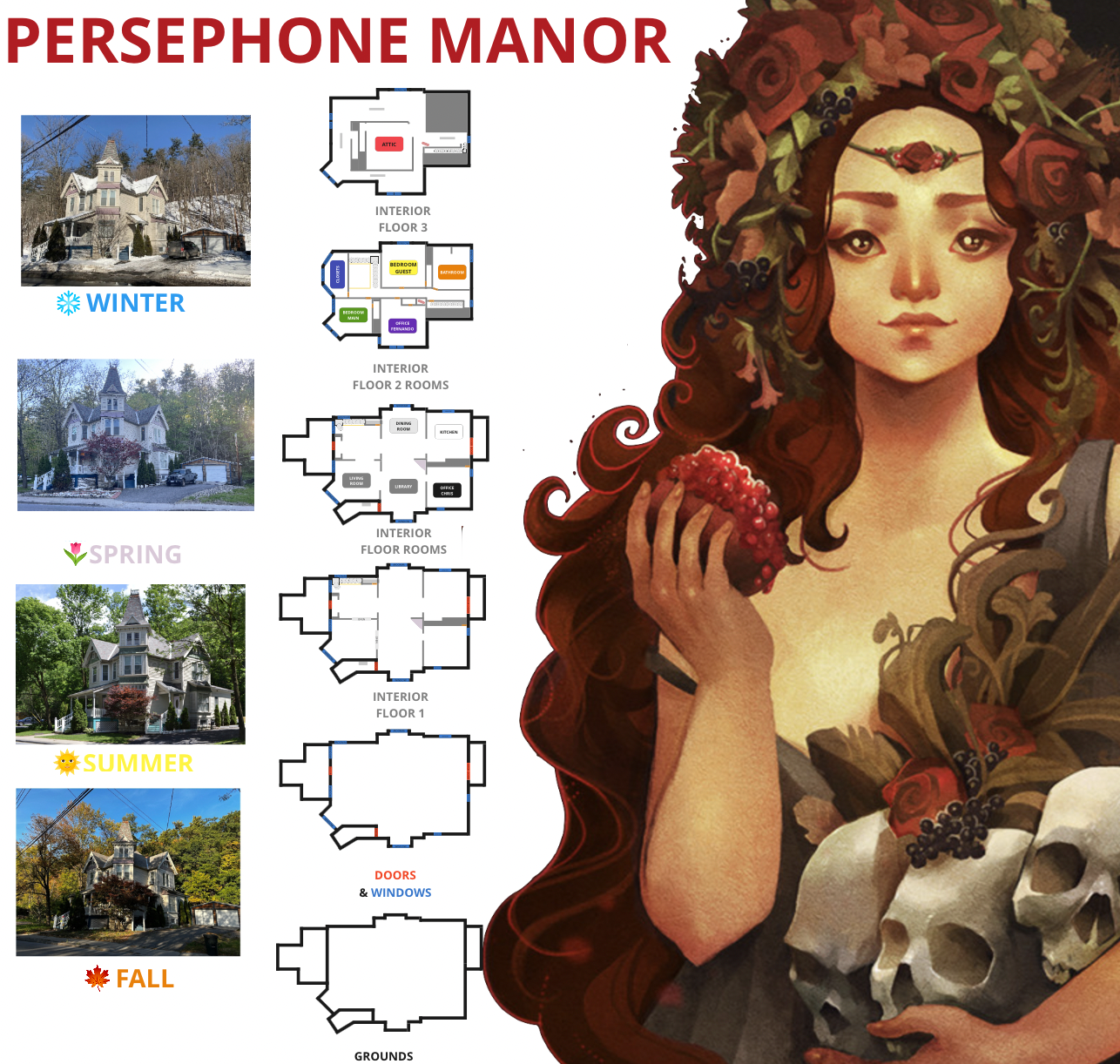
The Residents of Persephone Manor
1890- The present
